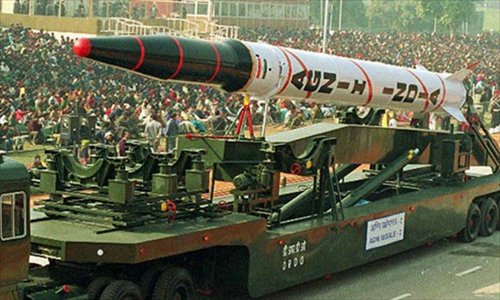New Delhi: India on Tuesday successfully test-fired endogenously developed nuclear capable Agni-I, a ballistic missile from Abdul Kalam Island of Odisha coast at around 8.30am. It was a short-range ballistic missile (SRBM). The test fire of the surface-to-surface Missile, described as Agni I variant, was carried out by the Strategic Forces Command (SFC) of the Indian Army from the lunch complex-IV of Integrated Test Range (ITR) of Odisha coast.The surface-to-surface missile, powered by solid propellants, had test-fired from a mobile launcher of the Integrated Test Range (ITR) at Abdul Kalam Island.
The test came two weeks after successful flight testing of longest range Inter-Continental Range Ballistic Missile (ICBM) Agni-V from the same test facility. The missile with a length of 4.8 m and diameter of 1.3 m is powered by both solid and liquid propellants which gave it a speed of 2.5 km per second. Agni-I has a height of 15 meters, hence can be launched from both road and rail mobile launchers. It weighs around 12 tonnes (12000 Kilograms) and can carry both conventional and nuclear payload of about 1000 kg was test-fired. Agni-I was developed by a leading missile development laboratory of DRDO in collaboration with Defence Research Development Laboratory and Research Centre Imarat and integrated by Bharat Dynamics Limited.
It was 18th version of Agni-I, which could achieve all parameters within the stipulated time period, mentioned the defence sources. The surface-to-surface, single stage missile, powered by solid propellants, was launched as part of a regular training exercise by the armed forces. The missile has a specialized navigation system, which makes sure that it reaches the target with a high degree of certainty and precision. It has proved its exceptional performance in terms of range and accuracy. The last trial was on effectively and successfully done on November 22, in the year 2016 from the same base. DRDO had successfully tested country’s longest indigenously developed nuclear missile Agni-V, in January this year.











